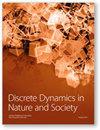加强土工聚合物混合优化:将普拉克特-伯曼法和响应面方法结合用于可持续建筑材料
IF 1.2
4区 数学
Q3 MATHEMATICS, INTERDISCIPLINARY APPLICATIONS
引用次数: 0
摘要
如今,建筑行业正在使用粉煤灰作为水泥的潜在替代品。由于粉煤灰具有更好的机械性能、环保性和低成本,土工聚合物技术将粉煤灰作为一种前景广阔的粘结剂材料加以利用。本文采用 Plackett-Burman 法筛选了影响抗压强度和温降的 7 个因素,如液体与粉煤灰的比例、硅酸盐与氢氧化物的比例、固化温度、固化时间、NaOH 的浓度(摩尔数)、固化前的静置时间和超塑化剂的用量,并进行了优化。其中,抗压强度和温降是分析参数的主要响应指标。从普拉克特-伯曼设计中确定的重要变量将进一步考虑使用响应面方法进行优化。分析结果表明,0.4071 液体-飞灰比、2.5 硅酸盐-氢氧化物比和 6 小时固化期的最佳值使验证实验中优化介质下的最大抗压强度和温降分别为 28.87 兆帕和 5.3 摄氏度,与观察值 27.20 兆帕和 5.4 摄氏度相比,仅相差 3.93% 和 1.85%。本文章由计算机程序翻译,如有差异,请以英文原文为准。
Enhancing Geopolymer Mix Optimization: Integration of the Plackett–Burman Method and Response Surface Methodology for Sustainable Construction Materials
Nowadays, construction industries are using flyash as a potential alternative for cement. Due to its improved mechanical properties, ecofriendly nature, and low cost, geopolymer technology makes use of flyash as a promising future binder material. In this paper, 7 factors such as liquid-to-flyash ratio, silicate-to-hydroxide ratio, curing temperature, curing period, concentration of NaOH (molarity), rest period prior to curing, and dosage of superplasticizer that influence the compressive strength and temperature drop are screened using the Plackett–Burman method for optimization. Here, compressive strength and temperature drop are taken as the main indices of response to analyze the parameters. The significant variables determined from the Plackett–Burman design are further considered for the process of optimization using the response surface methodology. From the analysis, the optimum values of 0.4071 liquid-to-flyash ratio, 2.5 silicate-to-hydroxide ratio, and 6 hours curing period give maximum compressive strength and temperature drop of 28.87 MPa and 5.3°C under the optimized medium in the validation experiment which varies by only 3.93% and 1.85% from the observed value of 27.20 MPa and 5.4°C.
求助全文
通过发布文献求助,成功后即可免费获取论文全文。
去求助
来源期刊

Discrete Dynamics in Nature and Society
综合性期刊-数学跨学科应用
CiteScore
3.00
自引率
0.00%
发文量
598
审稿时长
3 months
期刊介绍:
The main objective of Discrete Dynamics in Nature and Society is to foster links between basic and applied research relating to discrete dynamics of complex systems encountered in the natural and social sciences. The journal intends to stimulate publications directed to the analyses of computer generated solutions and chaotic in particular, correctness of numerical procedures, chaos synchronization and control, discrete optimization methods among other related topics. The journal provides a channel of communication between scientists and practitioners working in the field of complex systems analysis and will stimulate the development and use of discrete dynamical approach.
 求助内容:
求助内容: 应助结果提醒方式:
应助结果提醒方式:


